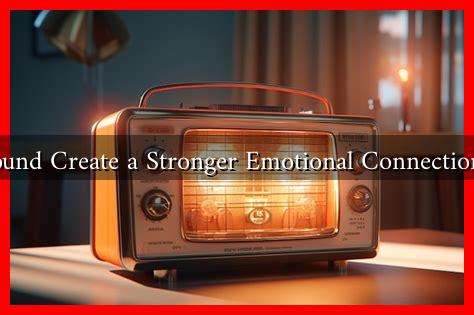-
Table of Contents
Does Sound Create a Stronger Emotional Connection in Ads?
In the world of advertising, capturing the audience’s attention is paramount. While visuals have long been the primary focus, recent studies suggest that sound plays a crucial role in forging emotional connections with consumers. This article explores how sound influences emotional responses in advertising, supported by examples, case studies, and relevant statistics.
The Power of Sound in Advertising
Sound is a powerful tool that can evoke emotions, create memories, and influence behavior. In advertising, sound encompasses various elements, including music, voiceovers, sound effects, and jingles. Each of these components can significantly impact how a message is received and processed by the audience.
Emotional Resonance Through Music
Music is one of the most potent elements of sound in advertising. It can set the tone, create atmosphere, and evoke specific emotions. Research indicates that music can enhance the emotional impact of an advertisement by:
- Creating Mood: Upbeat music can generate feelings of happiness and excitement, while slower, softer music can evoke nostalgia or sadness.
- Enhancing Recall: Advertisements with memorable jingles or soundtracks are more likely to be remembered by consumers.
- Building Brand Identity: Consistent use of specific music styles can help establish a brand’s identity and make it more recognizable.
For example, Coca-Cola’s use of catchy jingles and uplifting music in their commercials has created a strong emotional connection with consumers, reinforcing their brand message of happiness and togetherness.
Voiceovers and Emotional Engagement
The tone and delivery of voiceovers can also significantly impact emotional engagement. A warm, friendly voice can create a sense of trust and familiarity, while a more authoritative voice can convey reliability and expertise. According to a study by the American Psychological Association, the emotional tone of a voice can influence how messages are perceived and remembered.
- Trustworthiness: A calm and soothing voice can enhance the credibility of the message.
- Relatability: A conversational tone can make the audience feel more connected to the brand.
For instance, Apple’s advertisements often feature calm and reassuring voiceovers that align with their brand image of innovation and simplicity, fostering a deeper emotional connection with their audience.
Case Studies: Successful Use of Sound in Advertising
Several brands have successfully leveraged sound to create emotional connections with their audiences. Here are a few notable examples:
- Google’s “Year in Search”: Each year, Google releases a video summarizing the year’s most searched topics. The accompanying music is carefully chosen to evoke nostalgia and reflection, creating a powerful emotional response that resonates with viewers.
- John Lewis Christmas Advertisements: Known for their heartwarming holiday ads, John Lewis often uses poignant music to enhance the emotional narrative of their commercials, resulting in widespread acclaim and anticipation each year.
- Always’ “Like a Girl”: This campaign utilized a powerful voiceover and impactful sound design to challenge stereotypes and empower women, creating a strong emotional connection with the audience.
The Science Behind Sound and Emotion
Numerous studies have explored the relationship between sound and emotional response. A study published in the journal Psychology & Marketing found that advertisements with congruent music and visuals resulted in higher emotional engagement and brand recall. Furthermore, research from the Frontiers in Psychology journal indicates that music can activate the brain’s reward system, leading to increased feelings of pleasure and satisfaction.
Conclusion: The Future of Sound in Advertising
As the advertising landscape continues to evolve, the importance of sound in creating emotional connections cannot be overstated. Brands that effectively harness the power of sound—through music, voiceovers, and sound effects—can enhance their messaging and foster deeper relationships with their audiences. As consumers become increasingly desensitized to visual stimuli, sound may become the key differentiator in capturing attention and driving emotional engagement.
In summary, sound is not just an accessory in advertising; it is a vital component that can significantly influence emotional connections. By understanding and leveraging the power of sound, brands can create more impactful and memorable advertising experiences.

